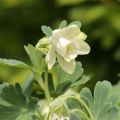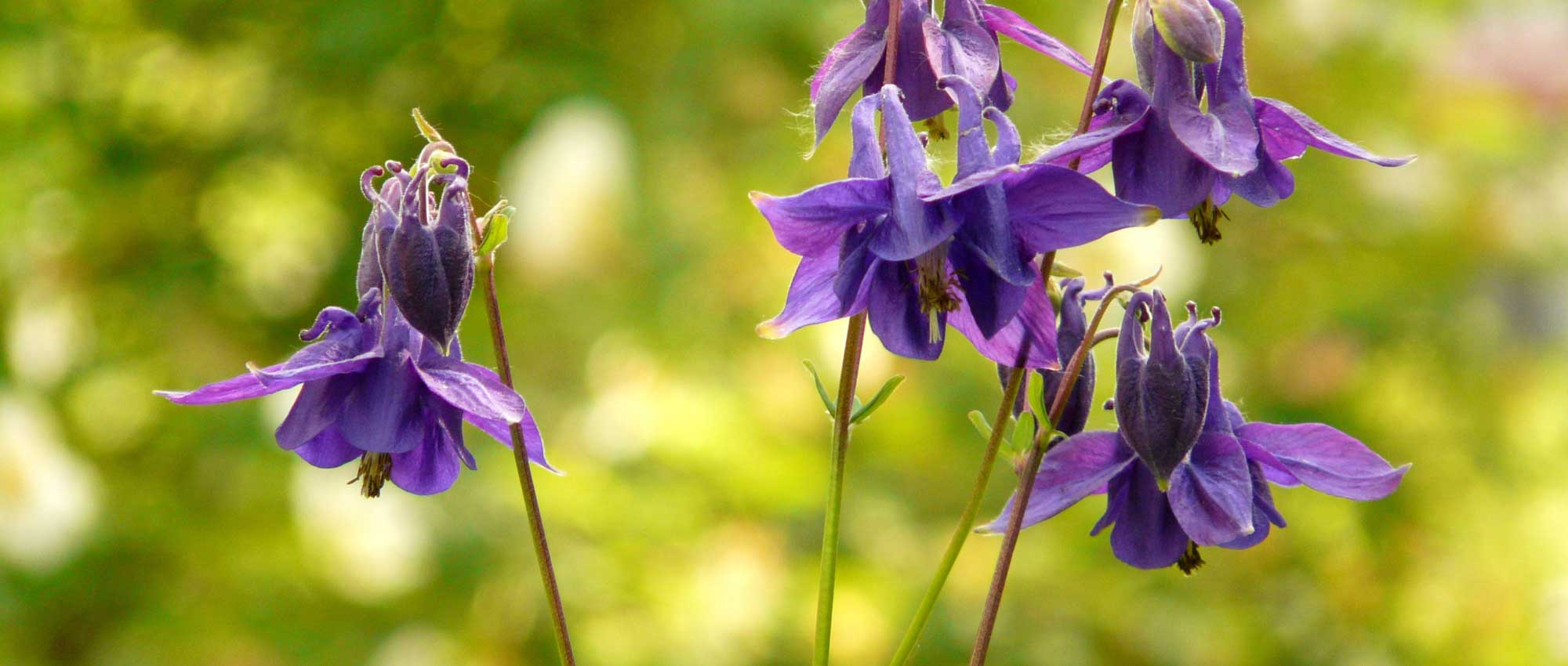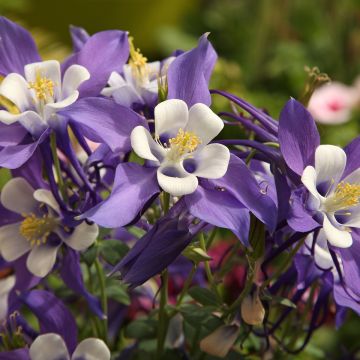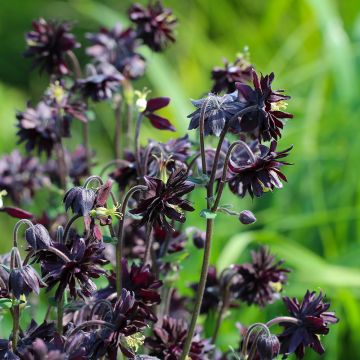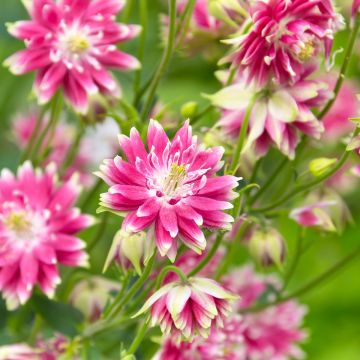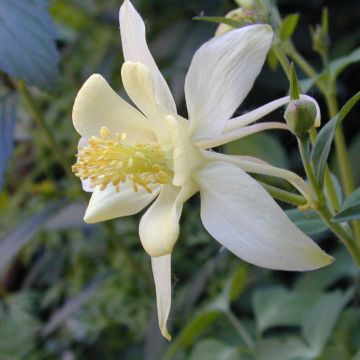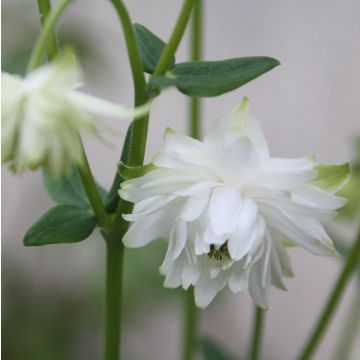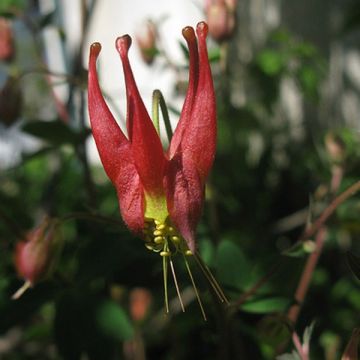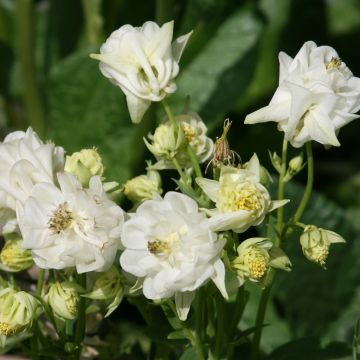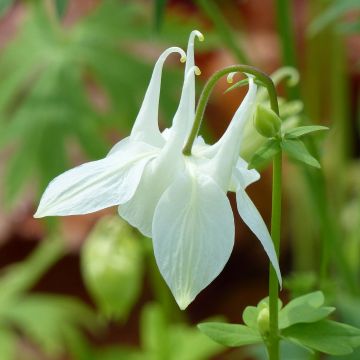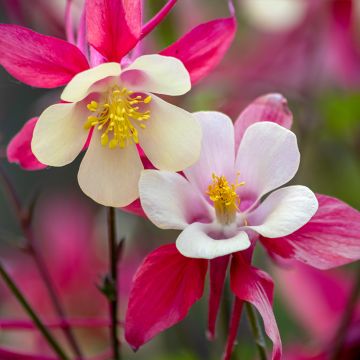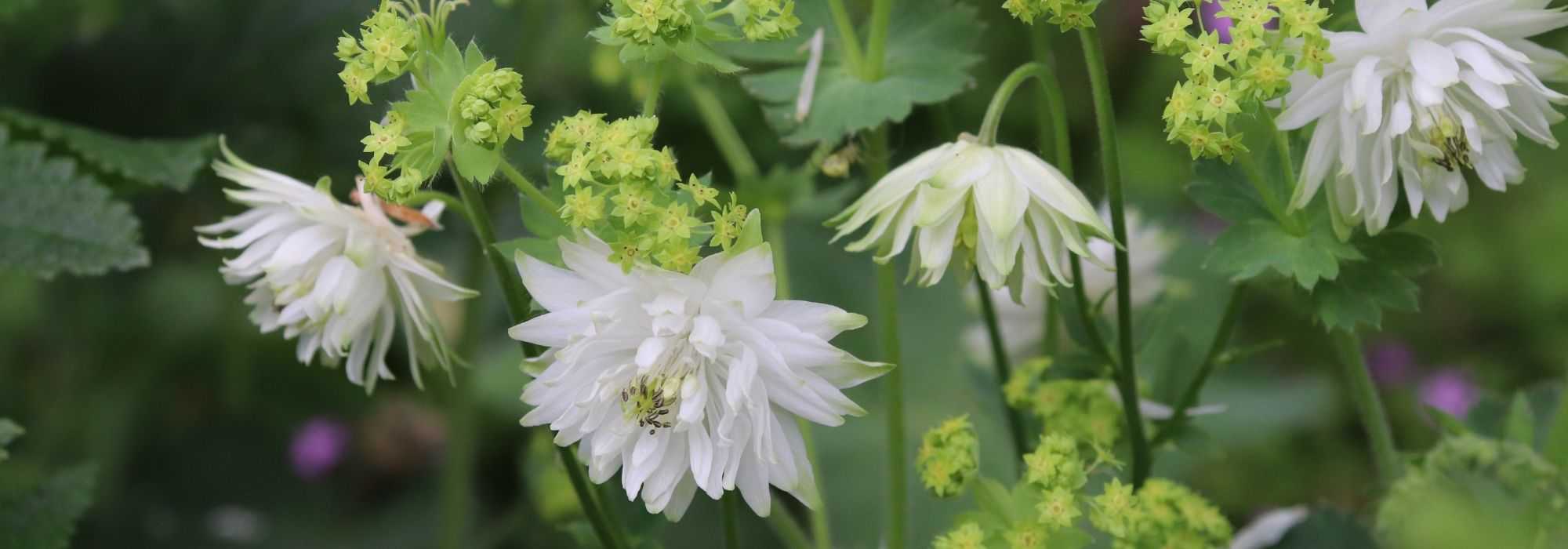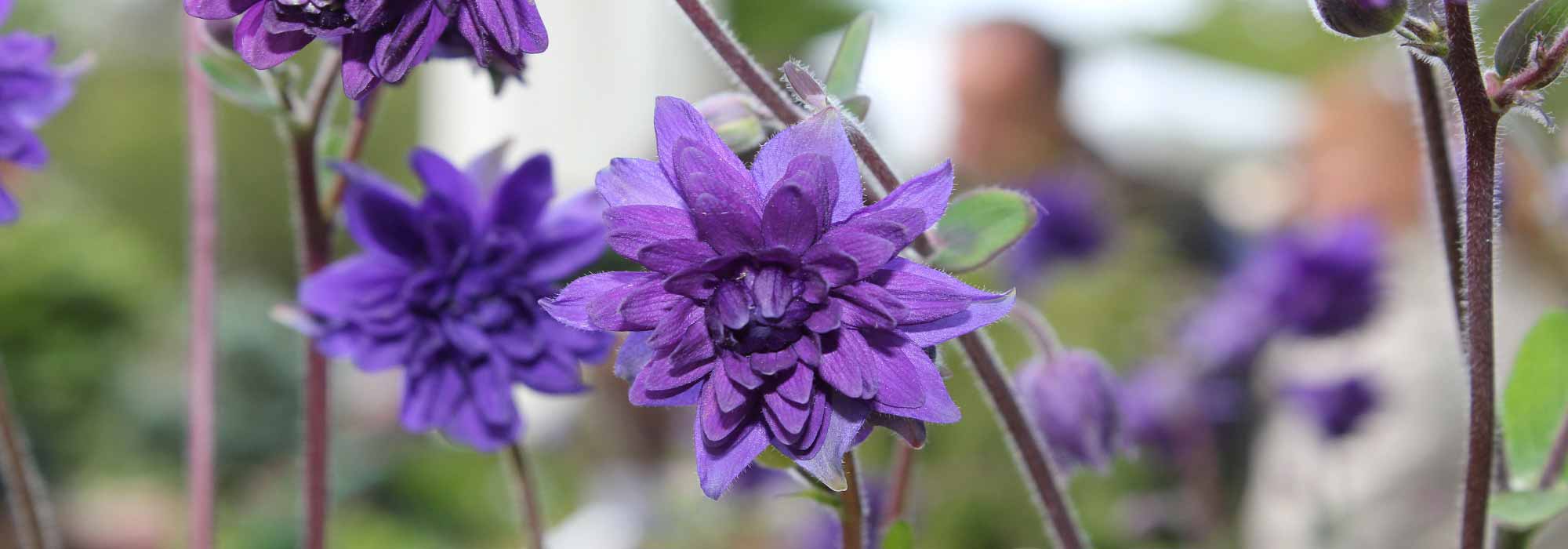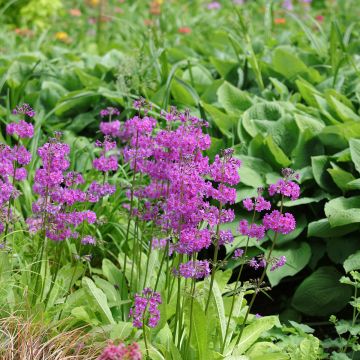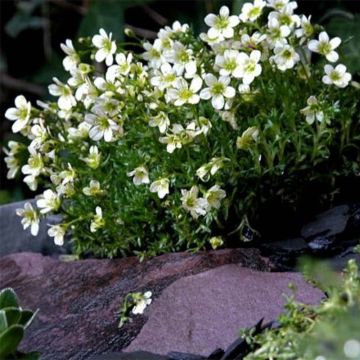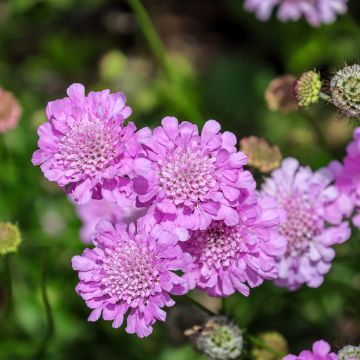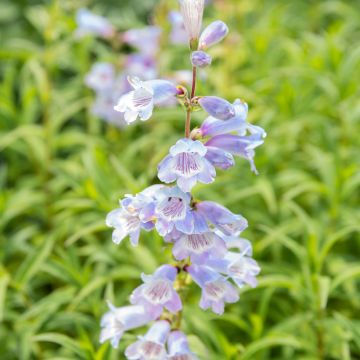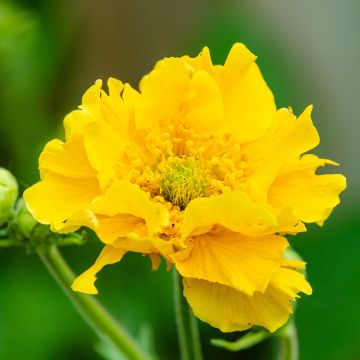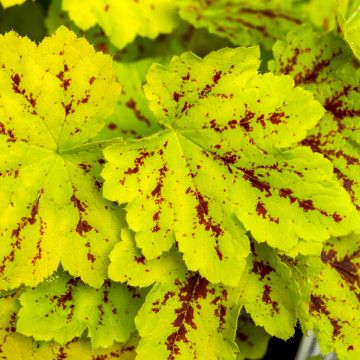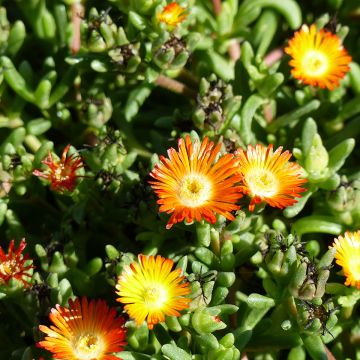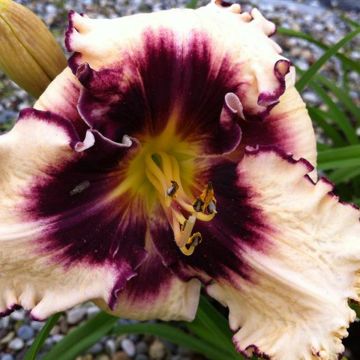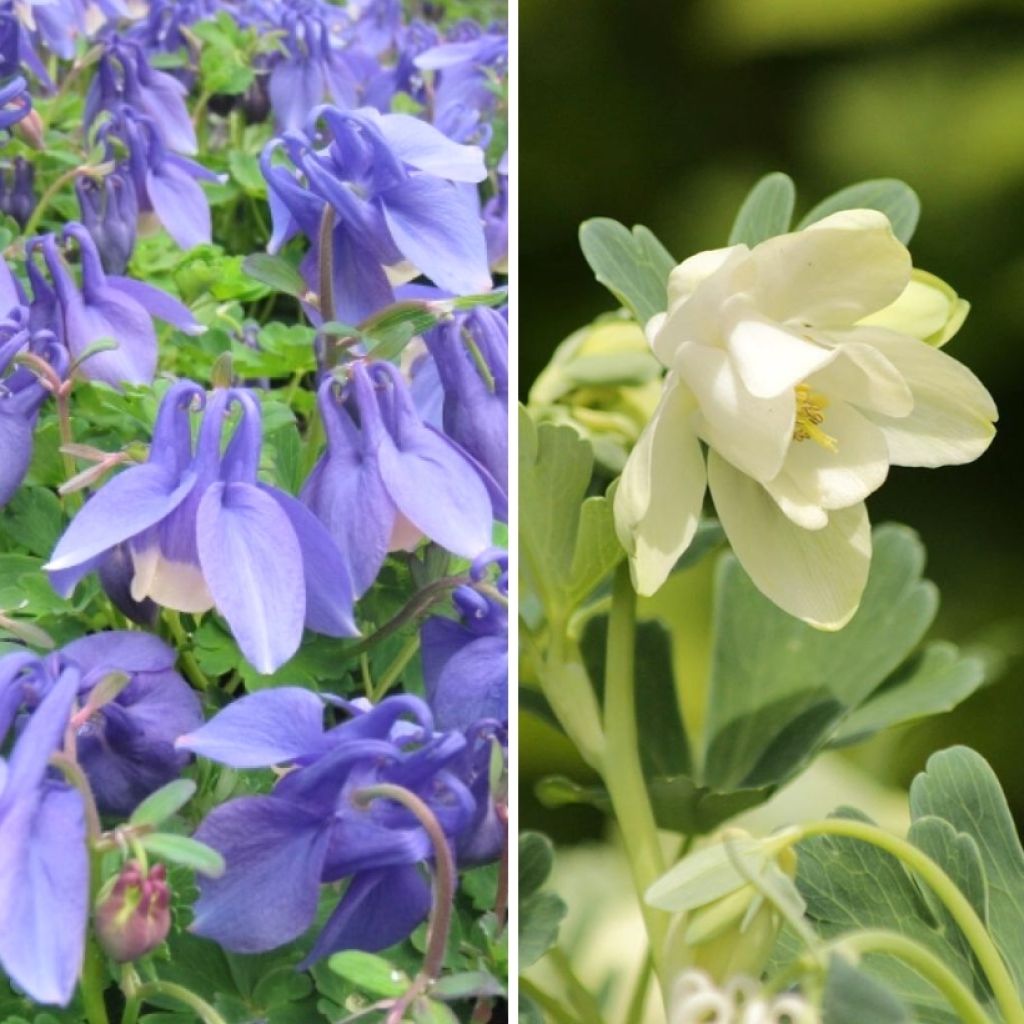

Duo of dwarf blue and white Columbines
Duo of dwarf blue and white Columbines
Aquilegia flabellata Ministar, Cameo White
European Columbine, Granny's Nightcap, Common Columbine
Special offer!
Receive a €20 voucher for any order over €90 (excluding delivery costs, credit notes, and plastic-free options)!
1- Add your favorite plants to your cart.
2- Once you have reached €90, confirm your order (you can even choose the delivery date!).
3- As soon as your order is shipped, you will receive an email containing your voucher code, valid for 3 months (90 days).
Your voucher is unique and can only be used once, for any order with a minimum value of €20, excluding delivery costs.
Can be combined with other current offers, non-divisible and non-refundable.
This plant carries a 12 months recovery warranty
More information
We guarantee the quality of our plants for a full growing cycle, and will replace at our expense any plant that fails to recover under normal climatic and planting conditions.
Would this plant suit my garden?
Set up your Plantfit profile →
Collection items (2 plants)
Description
The collection consists of:
- 1 x Aquilegia flabellata 'Ministar': an award-winning variety in England in 1993 for its ornamental qualities and performance in the garden. Flowers are 4 cm (2in) in diameter, slightly pendulous, composed of sepals with horny spurs of an almost electric blue surrounding a small corolla of white petals with a bluish base.
- 1 x Aquilegia flabellata 'Cameo White': truly luminous white flowering, barely softened with cream at the center. Flowers are 4 cm (2in) in diameter, slightly pendulous, composed of sepals with horny spurs surrounding a small corolla of white petals with a cream base.
Aquilegia flabellata, also called dwarf Columbine, is a botanical species native to mountainous regions of Japan and Korea. It is a perennial herbaceous plant, with vegetation that persists more or less in winter. Its slightly bluish green foliage is quite decorative, and the indentation of the basal leaves gives an impression of lightness.
Planted next to spring bulbs, this pair of dwarf flabellata Columbines will hide their dried and yellowing leaves at the end of spring. Compact and discreet, they are essential in mixed borders, where they bring a light and whimsical feel. They can be planted in many different areas of the garden, taking care to leave a space of 20 cm (8in) around each plant: in the middle of a perennial bed, in a border, at the base of bushes, on the edge of a woodland, on a slope, in a cool and shaded rockery... They will be magnificent when planted in groups of 4 to 6 to create a dense clump. In woodlands, in a 'romantic garden' spirit, they can be combined with all kinds of perennials such as small Ferns, Foxgloves, Bleeding Hearts, Peach-Leaved Bellflowers or Corydales. Their modest size allows them to be grown in pots, where they perform very well.
Be careful to keep Columbines separate from each other, as wild hybridisation can alter the varieties over time!
Flowering
Foliage
Plant habit
Botanical data
Aquilegia
flabellata
Ministar, Cameo White
Ranunculaceae
European Columbine, Granny's Nightcap, Common Columbine
Cultivar or hybrid
Other Aquilegia
View all →Planting and care
Plant Aquilegia flabellata in partial shade or morning sun, for example, as it dislikes hot exposures. It will be satisfied with well-loosened ordinary soil, just be careful that it is not too chalky, in which case you should add a bit of peat and compost to the planting hole. The soil should remain slightly moist, but not waterlogged. The foliage persists more or less in winter, but if it is a bit grayish, cut it back in autumn, and fresh leaves will appear. If you cut the flowers before seed production, the flowering will last a bit longer and you will avoid some of the abundant self-seeding that can yield very different results from the parent plants.
Planting period
Intended location
Care
Planting & care advice
This item has not been reviewed yet - be the first to leave a review about it.
Similar products
Haven't found what you were looking for?
Hardiness is the lowest winter temperature a plant can endure without suffering serious damage or even dying. However, hardiness is affected by location (a sheltered area, such as a patio), protection (winter cover) and soil type (hardiness is improved by well-drained soil).

Photo Sharing Terms & Conditions
In order to encourage gardeners to interact and share their experiences, Promesse de fleurs offers various media enabling content to be uploaded onto its Site - in particular via the ‘Photo sharing’ module.
The User agrees to refrain from:
- Posting any content that is illegal, prejudicial, insulting, racist, inciteful to hatred, revisionist, contrary to public decency, that infringes on privacy or on the privacy rights of third parties, in particular the publicity rights of persons and goods, intellectual property rights, or the right to privacy.
- Submitting content on behalf of a third party;
- Impersonate the identity of a third party and/or publish any personal information about a third party;
In general, the User undertakes to refrain from any unethical behaviour.
All Content (in particular text, comments, files, images, photos, videos, creative works, etc.), which may be subject to property or intellectual property rights, image or other private rights, shall remain the property of the User, subject to the limited rights granted by the terms of the licence granted by Promesse de fleurs as stated below. Users are at liberty to publish or not to publish such Content on the Site, notably via the ‘Photo Sharing’ facility, and accept that this Content shall be made public and freely accessible, notably on the Internet.
Users further acknowledge, undertake to have ,and guarantee that they hold all necessary rights and permissions to publish such material on the Site, in particular with regard to the legislation in force pertaining to any privacy, property, intellectual property, image, or contractual rights, or rights of any other nature. By publishing such Content on the Site, Users acknowledge accepting full liability as publishers of the Content within the meaning of the law, and grant Promesse de fleurs, free of charge, an inclusive, worldwide licence for the said Content for the entire duration of its publication, including all reproduction, representation, up/downloading, displaying, performing, transmission, and storage rights.
Users also grant permission for their name to be linked to the Content and accept that this link may not always be made available.
By engaging in posting material, Users consent to their Content becoming automatically accessible on the Internet, in particular on other sites and/or blogs and/or web pages of the Promesse de fleurs site, including in particular social pages and the Promesse de fleurs catalogue.
Users may secure the removal of entrusted content free of charge by issuing a simple request via our contact form.
The flowering period indicated on our website applies to countries and regions located in USDA zone 8 (France, the United Kingdom, Ireland, the Netherlands, etc.)
It will vary according to where you live:
- In zones 9 to 10 (Italy, Spain, Greece, etc.), flowering will occur about 2 to 4 weeks earlier.
- In zones 6 to 7 (Germany, Poland, Slovenia, and lower mountainous regions), flowering will be delayed by 2 to 3 weeks.
- In zone 5 (Central Europe, Scandinavia), blooming will be delayed by 3 to 5 weeks.
In temperate climates, pruning of spring-flowering shrubs (forsythia, spireas, etc.) should be done just after flowering.
Pruning of summer-flowering shrubs (Indian Lilac, Perovskia, etc.) can be done in winter or spring.
In cold regions as well as with frost-sensitive plants, avoid pruning too early when severe frosts may still occur.
The planting period indicated on our website applies to countries and regions located in USDA zone 8 (France, United Kingdom, Ireland, Netherlands).
It will vary according to where you live:
- In Mediterranean zones (Marseille, Madrid, Milan, etc.), autumn and winter are the best planting periods.
- In continental zones (Strasbourg, Munich, Vienna, etc.), delay planting by 2 to 3 weeks in spring and bring it forward by 2 to 4 weeks in autumn.
- In mountainous regions (the Alps, Pyrenees, Carpathians, etc.), it is best to plant in late spring (May-June) or late summer (August-September).
The harvesting period indicated on our website applies to countries and regions in USDA zone 8 (France, England, Ireland, the Netherlands).
In colder areas (Scandinavia, Poland, Austria...) fruit and vegetable harvests are likely to be delayed by 3-4 weeks.
In warmer areas (Italy, Spain, Greece, etc.), harvesting will probably take place earlier, depending on weather conditions.
The sowing periods indicated on our website apply to countries and regions within USDA Zone 8 (France, UK, Ireland, Netherlands).
In colder areas (Scandinavia, Poland, Austria...), delay any outdoor sowing by 3-4 weeks, or sow under glass.
In warmer climes (Italy, Spain, Greece, etc.), bring outdoor sowing forward by a few weeks.






























